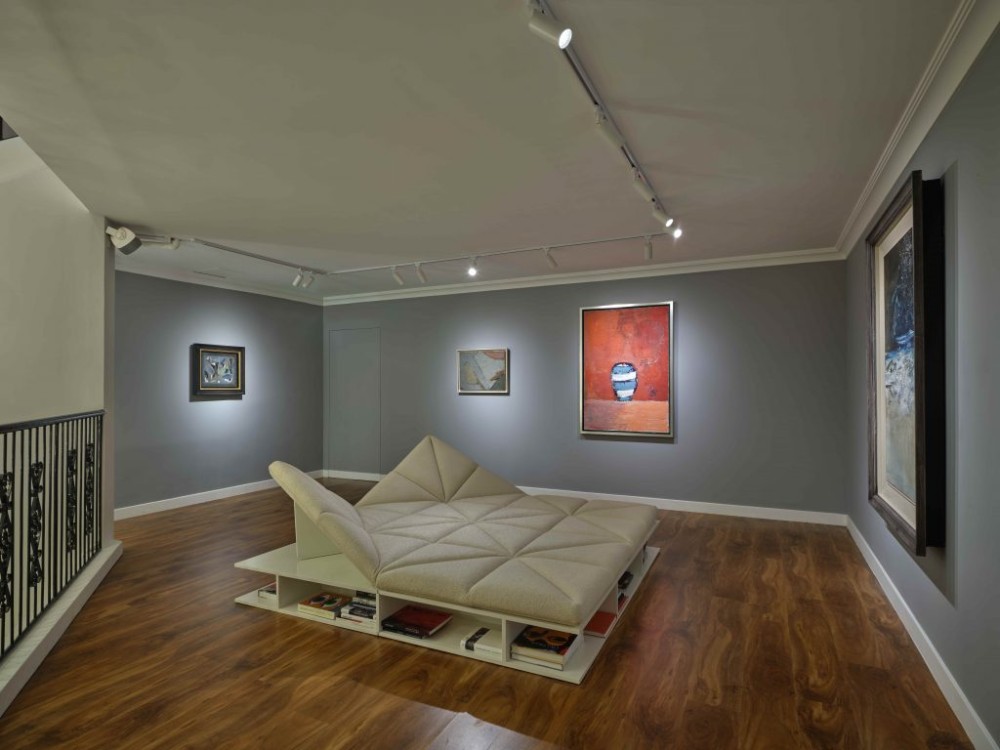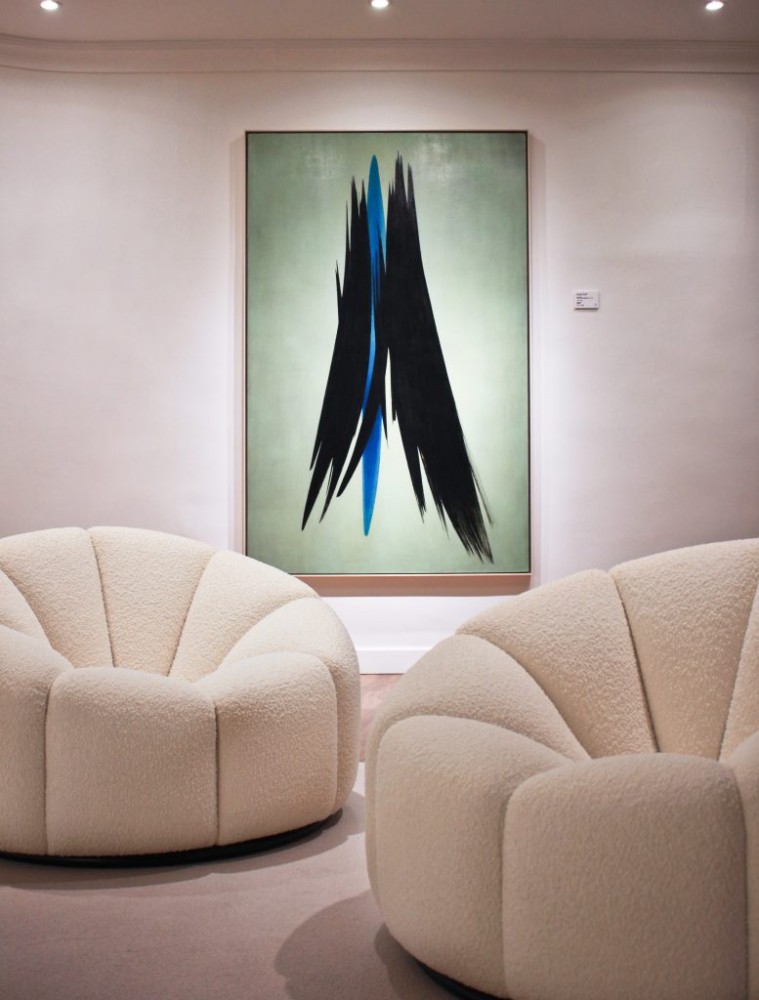The family legacy of furniture designer Pierre Paulin
Feb 18, 2022
From the Élysée Palace to Kanye West’s living room to Hong Kong’s Villepin gallery, Pierre Paulin’s unique, sculptural furniture has stood the test of time and shifting tastes. Yana Fung talks to the late designer’s son Benjamin Paulin about preserving the family heritage.

You may be forgiven if you don’t immediately recognise the name Pierre Paulin. But chances are you’ve admired, and likely coveted, one of the late designer’s furniture pieces after seeing it on a movie set, in a celebrity’s living room or perhaps in a modern art museum.
After getting his start as an interior designer and taking inspiration from Scandinavian aesthetics and industry icons such as Charles Eames, Harry Bertoia, George Nelson and Franco Albini, Paulin began designing his own furniture at age 26. With financial support from his dentist father, he showcased the finished products at the famous Salon des Arts Ménagers (Household Arts Show), which drew crowds of over one million at the time.

While the leap from a domestic appliances and furniture show in the 1950s to Kanye West’s living room today sounds implausible, the rapper isn’t the first famous face to appreciate the value of Paulin’s furniture designs. In 1971, Paulin redecorated some rooms in the private apartments of the Élysée Palace for the French president at the time, Georges Pompidou. He went on to furnish the office of François Mitterrand, another French president, in 1983. Lasting more than 40 years, Paulin’s time with the Mobilier National, a branch of the government that oversees state furniture, is the longest of any designer and stands as a testament to his talent.

Even after his death in 2009, Paulin’s designs live on through Paulin, Paulin, Paulin. Spearheaded by his wife, Maia Paulin, his son, Benjamin Paulin, and daughter-in-law Alice Lemoine, the family business circulates, develops and preserves the works of Pierre Paulin.
“It’s difficult for me to talk about our project like it would be a brand. Because, I would say, it’s a bit more organic than just a brand,” says Benjamin. “It’s a family story that is kind of a foundation, kind of a brand.” Not quite this or that, Paulin, Paulin, Paulin is in the business of preserving legacies by producing and selling rare pieces by Pierre Paulin, most of which have never been offered for sale until now.
Also see: Pierre Yovanovich’s inspirations for his furniture design brand, Mobilier
It all began in 2009 when Benjamin, faced with the loss of his father, encountered one of his furniture designs in a museum. Moved by the juxtaposition of having grown up with the same exact model yet now being unable to even touch and much less sit on it, Benjamin decided to take action. “I felt the need to give the possibility to my child and other people to experience these pieces,” he says.
Out of this need, the first piece was produced, which snowballed into one project after another. Familiar names, like Nicolas Ghesquière and Louis Vuitton, soon came knocking. Ideas that Pierre Paulin had in the ’60s, ’70s and ’80s became reality as a new generation fell in love with his unique aesthetic, perhaps to even greater acclaim than before. In a world where design trends change at the drop of a hat and what was vintage yesterday can be considered obsolete today, it’s not by pure luck that Paulin’s designs have endured.

“I think something in the design is not about a period, it’s kind of a new classic,” Benjamin says of items such as the Tulip lounge chair created for Artifort or the Dune couch – and Kanye favourite – with its moveable pieces and sunken profile. “They have a kind of intemporalité (timelessness)”.
“It’s the German functionalism and sense of the industrial process, and you have at the same time a kind of poetry, a sensuality, that’s Italian.
Indeed, with just one glance, the distinctive lines and curves of Paulin’s designs jump out at you. Their distinctiveness comes from his idea to use stretchy fabrics to upholster organic shapes that he created using twisted materials and moulded forms. This innovation allowed all the functional parts of the design to disappear, leaving a sculpture-like object, although Benjamin insists that “beauty over function” was not his father’s intention.
“I think you can feel it in his design.” – Benjamin Paulin
“He didn’t come from a visual idea to a realisation. It came from the technique to bring an aesthetic proposition,” he says. Paulin was a functionalist, meaning that design wasn’t purely aesthetic for him but that it had to serve a purpose. “To him, it was all about being useful. In all the work of my father, there’s no gesture, meaning nothing is there for nothing.”
Against the backdrop of pop design with its loud and bold colours, Paulin stayed loyal to functionality and, according to Benjamin, it worked out in the long run. “This is why his designs are still there and all the other designs from this period kind of disappeared or are considered a stereotype of the period,” he says.
A smoking room at Élysée Palace, 1972 & A dining room at Élysée Palace, 1972
Paulin was considered an artist by many, but to him labels like “designer” and “artist” couldn’t be used so interchangeably. “You cannot be an artist if you are obliged to respect something, so in his mind a designer cannot be an artist,” Benjamin explains. “My father says an artist is a wolf – he doesn’t obey any rules. A designer has to be a dog – he has to obey a lot of rules, there are a lot of elements he needs to respect.”
For all the rules Paulin had to obey, he didn’t allow himself to be held back by limitations, as he melded his French-Italian and Swiss-German heritage together to create something new. “It’s the German functionalism and sense of the industrial process, and you have at the same time a kind of poetry, a sensuality, that’s Italian,” Benjamin says. “I think you can feel it in his design.”

In what could be seen as another quantum leap, Paulin’s pieces have even made the journey East to Hong Kong, to the Villepin gallery to be exact. Co-founder Arthur de Villepin sees Paulin’s ability to cross divides, both social and geographical, in his furniture. “That’s art – creating a language through your pieces that can talk to different people,” he says. When everyone, from rappers to fashion designers to art collectors, has sung his praises, it’s clear that Paulin was on to something. “When you hear that coming from these people and at the same time you have his pieces in the Louvre Museum, for example, you really realise that he has been bridging worlds together,” Benjamin says.
There’s no doubt, therefore, that Paulin’s designs will go on to furnish many more international homes, galleries and museums. Designs that were impossible to produce before now have the chance to be realised, thanks to the efforts of his family. Rather than relics from another time, Benjamin sees his father’s work as having found its place with the Google generation. “This dream was made for this generation, not for that of the ’60s or ’70s,” he says, making it clear that the world has yet to see the last of Pierre Paulin’s designs.
Also see: Inside Leonardo DiCaprio’s Spanish colonial Los Feliz property






























